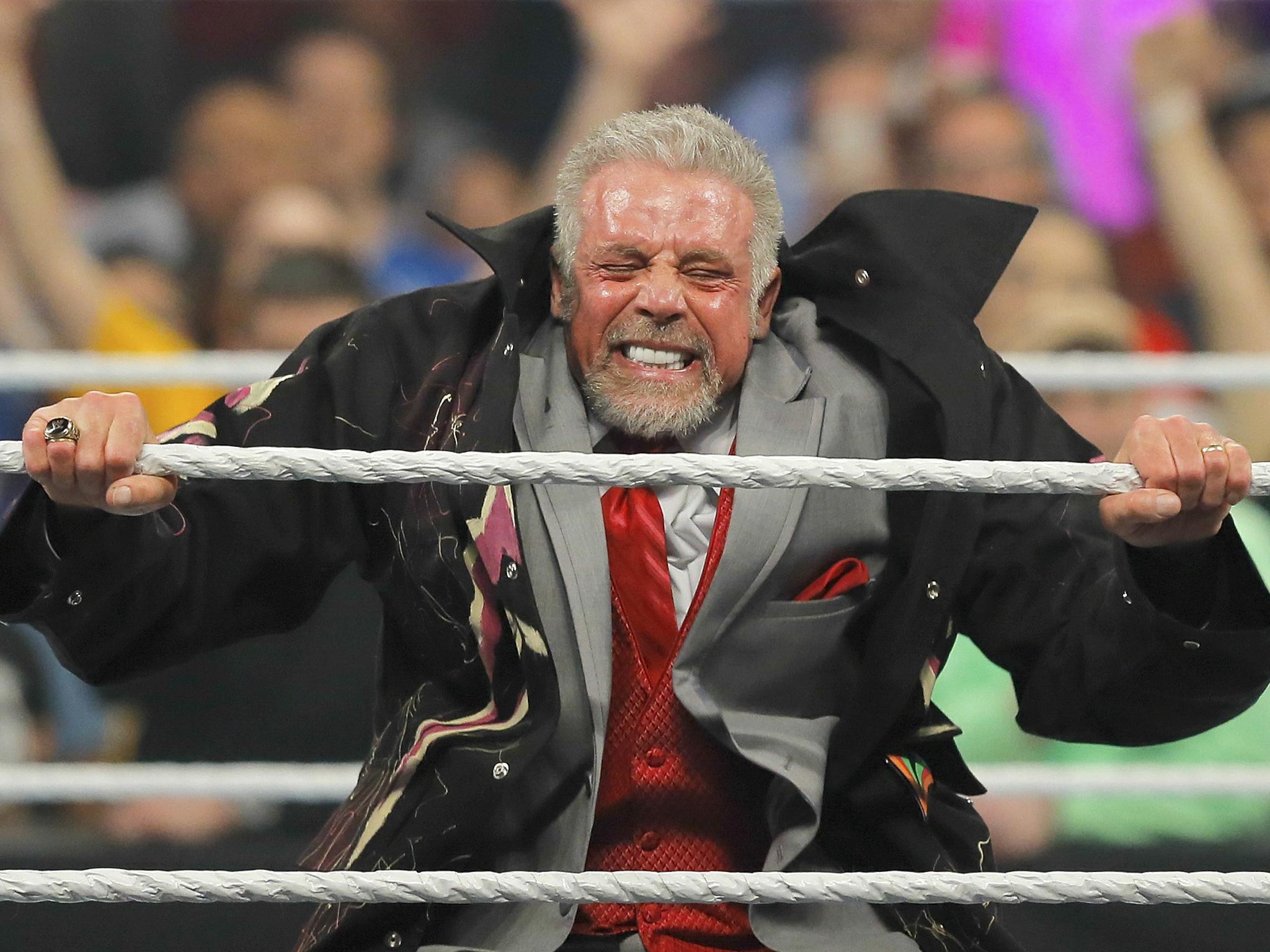Ultimate Warrior dead: Why wrestler James Hellwig should be considered a cultural icon
Hellwig, who died this week, was a cult hero in Britain as well as across America. It’s time that wrestlers like him receive the critical acclaim they deserve, says Andrew Soucek

He was a controversial conservative speaker, an amateur artist and a loving father of two. But it was his career of donning face paint, tying brightly coloured tassels tightly around his arms and blasting his way down to a wrestling ring for which he will be remembered by a generation of once-young fans.
James “Ultimate Warrior” Hellwig, who dropped dead at the age of 54 this week, had been a hero to millions of teenagers around the world, but like many other wrestlers of his era was largely ridiculed or outright ignored by the mainstream media.
His death on 7 April, one day after appearing on World Wrestling Entertainment’s (WWE) biggest TV show for the first time in nearly 18 years, shocked those who had watched him the night before. Yes, his hair was shorter and grey. His muscle mass was noticeably smaller and he walked with a bit of a limp. He did not look so ultimate any more. When he started to speak, though, he erased all doubts that it was truly the Warrior.
During his lengthy sabbatical from the unforgiving world of professional wrestling, most thought they would never see him again. This was because of his acrimonious relationship with WWE owner Vince McMahon. He did come home and, more importantly, he finally appeared to begin letting go of some of that destructive, long-held anger towards his former employer and co-workers.
On Monday Night Raw, he was full of energy, and violently shook the ring ropes like the good old days. By Tuesday, he was gone. It was a cruel joke to fans who long awaited his return.
While the premature death of footballer or a rock star would have made headlines in every paper, and prompted glowing appreciations of their career achievements, Ultimate Warrior’s death caused the smallest of ripples.
The manic faces of The Ultimate Warrior
Show all 6That is a shame, and deeply unfair. Most of the world just does not understand the impact and importance that wrestlers like Warrior had on a generation. They were bigger than any action hero. They were tougher than any sports star. They actually seemed to live the time-honoured story of good triumphing over evil.
These stars seemed to have it all, except that no one outside the wrestling world took them seriously. If you are an Arnold Schwarzenegger type and kill robots in movies, you will be fawned over by the general public. If you bodyslam a man for a living, you are a joke.
For long-time wrestling fans, it was another devastating blow in the seedy business of their favorite pastime. WWE had lost another one of our childhood heroes. The kids who followed the business while growing up are now in their late twenties to mid-thirties. They appear to be nearly hero-less these days.
Over the past couple of decades, wrestling has lost an incredible number of its top talent to that big wrestling ring in the sky. Cultural icons who transcended the sport such as Warrior and Randy Savage left us in their mid-fifties. That made them nearly ancient compared with others who died in their twenties and thirties.
The biggest match of Warrior’s career took place at WrestleMania VI when he faced off against Hulk Hogan. More than 65,000 fans packed the Toronto Skydome to witness one of the wrestling world’s biggest ever fights. That event took place in 1990. There were 14 matches on that show, and after Warrior’s passing, there are now 12 different men and women who competed that night who have since died. Fortunately Hogan himself is still with us, at 60.
Keep in mind that wrestling is a young man’s sport. Most of those wrestlers should still be living a middle-aged life. If any other professional team had that many former players dead in that span of time, questions would be asked. In wrestling, it is just accepted, or not talked about simply because it is wrestling.
Warrior’s final televised words to fans were: “The spirit of the Ultimate Warrior will live for ever.” It was an eerie way to go out. The memories of his career will surely live with those fans who grew up cheering him on and believing in his energetic but nonsensical messages.
He defeated their hated villains, and conquered the wrestling world. Those fans cared and grew to have a deep connection with him. While they poured all of their support behind this strange, enigmatic figure, most of the world simply did not notice his accomplishments and have only vague recollections of who he was.
And they probably will continue not to pay any more attention, until the next wrestler passes.
Andrew Soucek is a wrestling writer for whatculture.com
Subscribe to Independent Premium to bookmark this article
Want to bookmark your favourite articles and stories to read or reference later? Start your Independent Premium subscription today.

Join our commenting forum
Join thought-provoking conversations, follow other Independent readers and see their replies